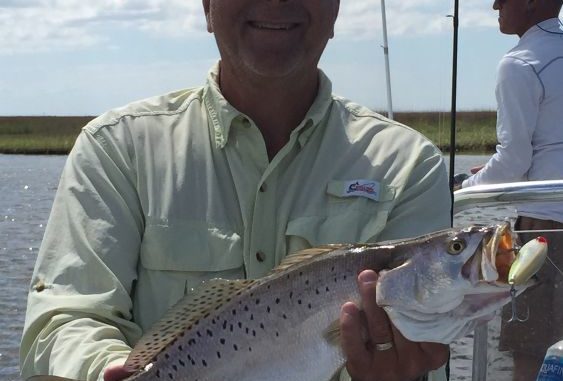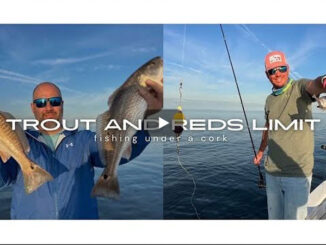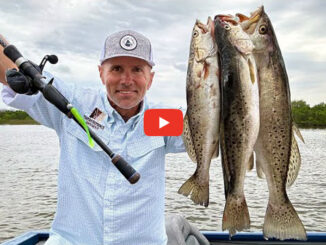
Target the Johnson Bayou rocks
Veteran charter boat captain Vince Theriot of Grand Chenier has been tuning up for what he hopes will be awesome summertime speckled trout fishing at some of his favorite places.
Theriot, an oil field industry worker who works 14-and-14 and owns Coastal Guide Service, was “catching the fire” out of speckled trout on topwaters during May on the lower end of Calcasieu Lake. During that time he lost what he believed would have been the biggest speckled trout of his fishing career, a guesstimated 9-pound class fish, when someone with the net couldn’t get to it in time and it got unbuttoned at the boat.
But all the while Theriot knew he’ll be turning his attention to the coastline after the first days of summer. Speckled trout fishing along the beach can be spectacular, water and weather conditions permitting.
“There’s a lot of freshwater coming down now but in July they’ll be on the beaches. I think the beach will get turned on in July,” Theriot said the last week of May.
While he was talking generally about the stretch of shoreline anywhere from Grand Chenier to Johnson Bayou, Theriot loves to target the Johnson Bayou rocks approximately 15 miles west of the Cameron Jetties.
“It’s a long run, and sometimes it’s hit or miss, but if you’ve got good weather and it’s slick calm, you can really catch them,” he said.
The rocks are “jetty rocks” that are bunched up in piles parallel to the beach, placed there to break the waves from the Gulf of Mexico.
There are about 30 of them, Theriot said, but the last five or six of them on the western-most end usually produce the best, he said.
“They’ve been there the longest,” he said. “That’s where most of the action is.”
Each pile of rocks is about three boat lengths long (about 60 feet), he said, and about 10- to 15-feet wide. There is anywhere from 50 to 75 yards between each pile.
Theriot has his routine down pat. He gets on the trolling motor and fishes with soft plastics around the rocks.
“They’re far enough from shore where you can go behind them in the boat,” he said.
The key is to find baitfish, especially schools of mullet.
Some anglers leave the shoreline and wade out to the rocks, fishing along the way, targeting the troughs and guts caused by the current.
“I see people sometimes standing on the rocks, actually walk up to them,” he said.
The veteran saltwater fishing guide prefers to fish with Egret Baits Wedgetail Mullet. Preferred color? Well, he said, “You have to try to find out what they want.”
Much of the time, though, he catches on chicken on a chain, often a favorite among the fish and to him because “to me it looks like more of a mullet color.”
Theriot also catches on suspending baits, particularly a Zombie Rip Stick made by Egret. The artificial lure is about 3 inches long, he said, and mostly he ties on a striped mullet- or clown-colored model.
After fishing the Johnson Bayou rocks, he said, many anglers, himself included, crank up and head a little farther west to fish for speckled trout around some pipeline markers that show where the pipelines intersect with the shoreline. Look for baitfish and fish as close to the beach as you can, he said.


